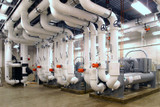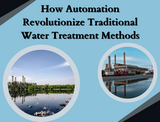How to Use a Calibration Column for Metering Pumps: Benefits, DIY Guide, and Top Brands
Posted by David Cannon on 25th Aug 2025
How to Use a Calibration Column for Metering Pumps: Benefits, DIY Guide, and Top Brands
When it comes to chemical dosing accuracy, your metering pump is only as reliable as its calibration. A calibration column—sometimes called a calibration cylinder—is a simple, cost-effective tool that ensures your pump delivers the exact amount of chemical you intend.
At Cannon Water Technology, we supply premium calibration columns from trusted brands like Koflo, Pulsafeeder, and Neptune Pump Co
How to Clean and Treat a Closed Loop Hydronic System in Commercial Buildings
Posted by David Cannon on 5th Jun 2025

Why You Should Maintain Your Closed Loop Hydronic System
A closed loop hydronic system is the heart of many commercial HVAC systems, especially those designed for heating hot water circulation. While these systems are designed to be low-maintenance, they are not immune to internal corrosion, sludge buildup, and system inefficiency.
Over time, dissolved oxygen, leftover oils and flux, or existing corrosion by-products can circulate through the system, causing:
Decreased energy efficiency
Pump
Common Flow Rate Measurement Errors and How to Solve Them
Posted by David Cannon on 4th Mar 2025

Flow rate measurement is critical in industrial processes because it promotes efficiency, safety, and quality control. Industries may optimize production, eliminate waste, and ensure consistent product quality by precisely measuring the movement of liquids, gasses, or materials.
For example, in a food processing plant, precision flow measurement ensures that ingredients are blended in the proper quantities, avoiding discrepancies. It also contributes significantly to safety by minimizing overfl
How Does Automation Revolutionize Traditional Water Treatment Methods?
Posted by David Cannon on 21st Mar 2024

Automation in water treatment refers to the use of technology and machinery to perform various processes involved in treating water without direct human intervention. It involves the integration of sensors, controllers, pumps, valves, and other equipment to automate tasks such as monitoring water quality, adjusting treatment parameters, controlling chemical dosing, and managing system operations.
The primary goal of automation in water treatment is to improve the efficiency, accuracy,
